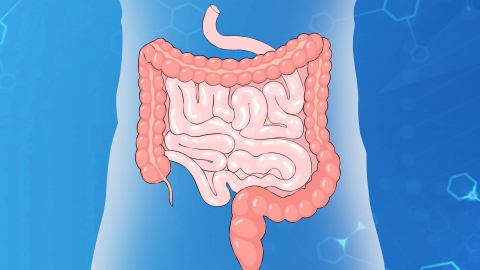What is the difference between intestinal bleeding and hemorrhoidal bleeding?
Generally speaking, the main differences between intestinal bleeding and hemorrhoid bleeding include the bleeding characteristics, pain manifestation, lesion location, inducing factors, and effects on defecation. If discomfort symptoms occur, it is recommended to seek timely diagnosis and treatment at a regular hospital. Detailed analysis is as follows:
1. Bleeding Characteristics
Intestinal bleeding may present with varying blood colors—bright red, dark red, or black—depending on the bleeding site and speed. The blood is often mixed with stool, and the amount may vary from small to large. Severe cases may even present with hematemesis (vomiting blood). Hemorrhoid bleeding typically presents as bright red blood, not mixed with stool, manifesting as dripping bleeding, jet-like bleeding, or blood on toilet paper. The bleeding amount can vary but often stops spontaneously.
2. Pain Manifestation
Intestinal bleeding caused by inflammation, tumors, or other conditions may be accompanied by abdominal pain. The location of pain correlates with the bleeding site and may manifest as dull pain or colicky pain. Hemorrhoid bleeding generally does not cause pain. However, when thrombosis or inflammation occurs in external hemorrhoids, there may be distending or stabbing pain in the anal area, differing in location and nature from the abdominal pain associated with intestinal bleeding.

3. Lesion Location
Intestinal bleeding can occur throughout the gastrointestinal tract, including the small intestine, colon, rectum, etc., such as bleeding from gastric ulcers, colonic polyps, or rectal tumors. Hemorrhoid bleeding originates from venous clusters beneath the mucosa of the lower rectum and anal skin. Internal hemorrhoids are located above the dentate line, while external hemorrhoids are located below the dentate line.
4. Inducing Factors
Intestinal bleeding can be induced by various factors such as intestinal inflammation, ulcers, tumors, vascular malformations, or intestinal trauma. Irregular eating habits and consumption of irritating foods may also trigger or exacerbate bleeding. Hemorrhoid bleeding is commonly caused by increased intra-abdominal pressure, such as straining during bowel movements due to constipation, prolonged sitting or standing, pregnancy, or obesity, which elevate venous pressure and lead to rupture.
5. Effects on Defecation
If intestinal bleeding is accompanied by intestinal dysfunction, symptoms such as alternating diarrhea and constipation or changes in bowel habits (e.g., increased frequency or altered stool shape) may occur. Hemorrhoid bleeding generally does not significantly alter bowel habits, although a mild sensation of incomplete evacuation may occur due to anal discomfort.
In daily life, attention should be paid to dietary hygiene, avoiding overeating, and regular intestinal examinations should be conducted for early detection and treatment of intestinal diseases. Maintaining good bowel habits is also important for preventing hemorrhoids.





